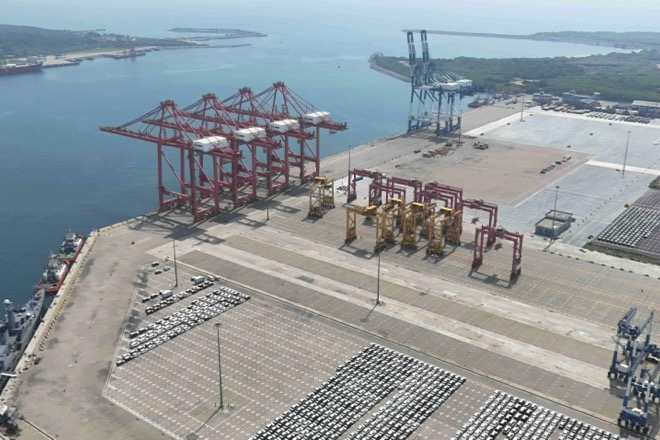As Hambantota International Port (HIP) gears up to enhance its container operations with the introduction of advanced crane technology in early February 2025, Wilson Qu, CEO of Hambantota International Port Group (HIPG), emphasized the port’s commitment to exploring untapped markets to expand its portfolio. This strategic initiative aims to significantly boost container volumes and solidify Sri Lanka’s position as a competitive force in global maritime trade. To achieve this, the port is implementing a comprehensive seaside and landside strategy designed to position HIP’s container division strategically for future growth.
The port’s landside strategy is progressing actively to attract investors to its industrial zone. Recently, an agreement was signed to establish a sponge-mattress factory within the zone. This business, targeting export markets in the USA, Europe, and Canada, marks a significant milestone as the first agreement finalised since the port launched container operations. Currently, the port is handling an increasing number of inquiries and anticipates finalising several additional agreements in 2025. The industrial zone is poised to create substantial employment opportunities while fostering a collaborative environment where Sri Lankan entrepreneurs can either partner with international companies or invest independently to meet rising international demand.
HIPG’s industrial zone will also generate more gateway cargo, drawing liners to the port and significantly enhancing connectivity. This initiative provides a considerable logistical advantage for cargo originating in the region, further solidifying the port’s role as a strategic hub in global trade.
“Hambantota Port’s strategic location on Sri Lanka’s southern coast, combined with the island’s central position along key maritime routes, offers a unique opportunity to attract customers who may not have previously considered Sri Lanka a viable option,” the CEO explained, emphasising that HIPG’s strategy goes beyond geopolitical influences and traditional market segmentation. “Instead, our focus is on delivering competitive commercial rates and exceptional service with investment in infrastructure and superstructure, because we are well aware that the port cannot rely solely on its location.”
As part of its seaside strategy, the port is entering the relay cargo market, representing a new opportunity for the country, which has a set goal to handle 10 million TEUs between 2025 and 2026. HIPG is also targeting the region’s container market, particularly transshipment. Currently, more than 70% of containerised cargo from the BIMSTEC countries bypasses Sri Lankan ports, presenting a substantial opportunity for HIP to capture a significant portion of this untapped market.
Through aggressive and strategic marketing to this segment, HIP aims to position itself as a key hub and unlock untapped potential in the region.
Relay cargo refers to the transfer of cargo between two ships at an intermediate port, which involves vessels from the same carrier. It is a strategic move aimed at improving operational efficiency and connecting services across different regions. By utilising an intermediate port, shipping lines can optimise their routes, streamline operations, and reduce overall transit times. In contrast, transshipment involves the movement of cargo between ships — often from different carriers, at an intermediate hub port when there is no direct route between the origin and the destination.
By leveraging Sri Lanka’s strategic location and offering tailored landside and seaside solutions for container operations, the Hambantota International Port is poised to redefine regional shipping dynamics and establish itself as a major player in the global logistics sector.

